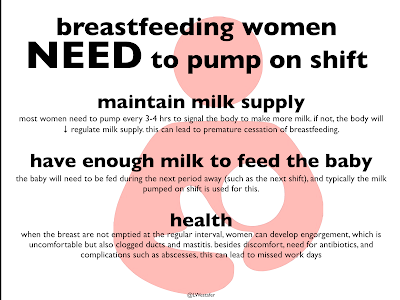The Gist: A D-dimer in the evaluation of suspected pulmonary embolism (PE) in patients with an intermediate probability of PE is recommended in many professional society guidelines [1-4]. The intermediate probability group is the most high-value group for application of a D-dimer, particularly in places such as the United States where the prevalence of PE among those tested is typically <10% [5].
Risk stratification of pulmonary embolism is complex, partially due to the presence of several cut-offs in Wells, one of the most popular risk stratification scores in the United States [6].
The origin: The original Wells score used a trichotomized risk scoring system: Low (<2), Intermediate (2-6), and High (>6), however, this was prior to the introduction of computed tomographic pulmonary angiogram (CTPA) and used compression ultrasound and ventilation-perfusion (V/Q) scans [7]. The diagnostic alogrithm proposed by Wells in 2001 was complex yet many patients in the intermediate-risk group who had a negative d-dimer were considered to have PE excluded (all of these patients got a V/Q and then high probability V/Q scans were treated as positive for PE regardless of dimer result) [78]. Further, this iteration employed a D-dimer assay not widely used currently (SimpliRED), a qualitative assay rather than the high sensitivity quantitative assays [8,9].
The simplification: The initial Wells algorithm was cumbersome and quickly became outdated with CTPA and new d-dimer assays. In 2006, the Christopher Study, evaluated a dichotomized Wells Score that stratified patients into "PE likely" (Wells >4) or "PE Unlikely" (Wells ≤ 4). This study incorporated more relevant diagnostic tests, the CTPA and the VIDAS or Tinaquant quantitative D-dimer assays and found that "PE unlikely" patients with a negative D-dimer had very low risk of PE at 90 days (0.5%; 95%CI 0.2%-1.1%). Approximately 37.1% had PE in the "PE likely" group vs 12.1% in the "PE unlikely" group [10].
The "intermediate" risk group incorporates patients for whom the D-dimer is the most helpful. Evaluation patterns for suspected PE vary across the world; however, CTPA yield (# positive/#ordered) is particularly low in the United States, generally <10% but often in the 3-5% range [5,11]. In a recent US study the prevalence of PE was 4% and, contrasted with the aforementioned Christopher study, in which the overall prevalence of PE was 20%, demonstrates that in the US the patients we evaluate are at
even lower risk of PE. Thus, in the US, the dichotomized Wells score likely moves patients with a probability of PE <15-20% to the "PE likely" group, inflating their perceived risk of PE.
In the US, we have a problem with overtesting for PE, and the use of the D-dimer in the intermediate-risk group, in addition to clinically adjusted D-dimer thresholds, may help improve the quality of care we deliver to patients [12].
References:
1. Wolf SJ, Hahn SA, Nentwich LM, Raja AS, Silvers SM, Brown MD. Clinical Policy: Critical Issues in the Evaluation and Management of Adult Patients Presenting to the Emergency Department With Suspected Acute Venous Thromboembolic Disease. Ann Emerg Med 2018;71(5):e59–109.
2. Raja AS, Greenberg JO, Qaseem A, Denberg TD, Fitterman N, Schuur JD. Evaluation of patients with suspected acute pulmonary embolism: Best practice advice from the Clinical Guidelines Committee of the American College of Physicians. Ann Intern Med 2015;163(9):701–11.
3. Lim W, Le Gal G, Bates SM, et al. American Society of Hematology 2018 guidelines for management of venous thromboembolism: diagnosis of venous thromboembolism. Blood Adv 2018;2(22):3226–56.
4. Konstantinides S V, Meyer G, Becattini C, et al. 2019 ESC Guidelines for the diagnosis and management of acute pulmonary embolism developed in collaboration with the European Respiratory Society (ERS): The Task Force for the diagnosis and management of acute pulmonary embolism of the European Society of. Eur Respir J. 2019;1–61.
5. Venkatesh AK, Agha L, Abaluck J, Rothenberg C, Kabrhel C, Raja AS. Trends and Variation in the Utilization and Diagnostic Yield of Chest Imaging for Medicare Patients With Suspected Pulmonary Embolism in the Emergency Department. Am J Roentgenol 2018;210(3):572–7.
6. Westafer LM, Kunz A, Mazor KM, Schoenfeld EM, Stefan MS, Lindenauer PK. Provider Perspectives on the Use of Evidence-based Risk Stratification Tools in the Evaluation of Pulmonary Embolism : A Qualitative Study. Acad Emerg Med 2020; In Press.
7. Wells PS, Ginsberg JS, Anderson DR, et al. Use of a clinical model for safe management of patients with suspected pulmonary embolism. Ann Intern Med. 1998;129(12):997–1005.
8. Wells PS, Anderson DR, Rodger M, et al. Excluding Pulmonary Embolism at the Bedside without Diagnostic Imaging : Management of Patients with Suspected Pulmonary Embolism Presenting to the Emergency Department by Using a. 2001;5(3):98–107.
9. Riley RS, Gilbert AR, Dalton JB, Pai S, McPherson RA. Widely used types and clinical applications of D-dimer assay. Lab Med 2016;47(2):90–102.
10. Van belle A, Büller HR, Huisman MV, et al. Effectiveness of managing suspected pulmonary embolism using an algorithm combining clinical probability, D-dimer testing, and computed tomography. JAMA. 2006;295(2):172-9.
11. Kline JA, Garrett JS, Sarmiento EJ, Strachan CC, Courtney DM. Over-Testing for Suspected Pulmonary Embolism in American Emergency Departments. Circ Cardiovasc Qual Outcomes. 2020;13(1):1–10.
12. Kearon C, De Wit K, Parpia S, et al. Diagnosis of Pulmonary Embolism with D-Dimer Adjusted to Clinical Probability. N Engl J Med 2019;381(22):2125–34.




























